HVAC Training for Beginners
Newsletter
HVAC training for beginners is a newsletter that provides prospective students informational videos, special discounts from online schools, and other details that will help you decide rather or not an HVAC Career is a good fit for you.
It also contains information that is valuable to current HVAC technician's that seek to better themselves through ongoing education classes.

The rest of this page is a sample newsletter so you can see the type of information you would receive when you join:
HVAC Training for Beginners
Air Conditioner Sequence of Operation
Below are a couple of good videos that show the sequence of operation on a split system air conditioner and give you a general idea on how they work. We call it a split system because the high side of the system (condenser, compressor and outdoor fan motor) are separate from the low side of the system (evaporator and blower motor).
Produced by HVAC Just the Facts
HVAC Training for Beginners
A General Description of How Air Conditioning Works
And it's Sequence of Operation
The definition of air conditioning is the process of treating air so as to control simultaneously its temperature, humidity, cleanliness and distribution to meet the requirements of the conditioned space.
An air conditioning system contains four major components: The compressor, condenser, metering device, and evaporator.
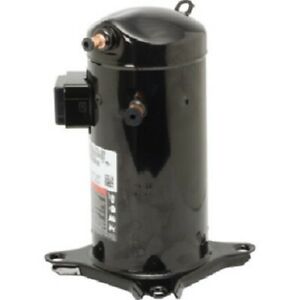 Compressor
CompressorCompressor: A device that changes a low pressure and temperature vapor (gas) into a higher pressure and temperature vapor (gas). The temperature rise is due to the heat of compression process.
The compressor is also referred to as the "Heart of the system", because it pumps refrigerant through the air conditioning system.
When the refrigerant enters the compressor it is in a cold vapor state returning from the evaporator. It enters the compressor because it is literally being sucked into it by the compressor. That is why the side of the compressor where refrigerant enters is called the suction line.
As the name suggests, the compressor compresses this cool vapor. and changes the vapor from a low pressure, low temperature vapor (gas) into a higher pressure and temperature (gas).
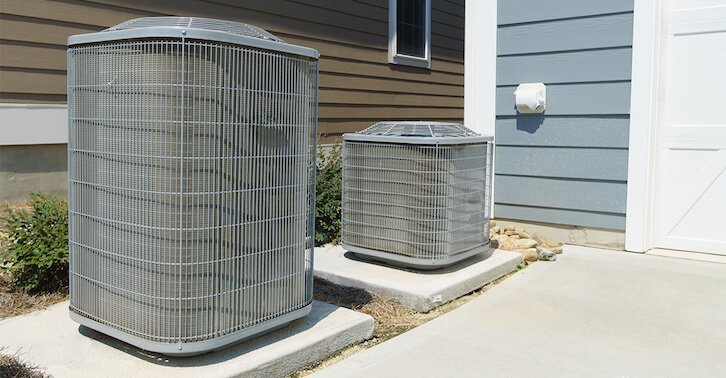 Condensing Units
Condensing UnitsCondenser: A device used to reject heat from the refrigeration system.
As this higher pressure and temperature vapor (gas) leaves the compressor it flows into a condenser coil. A Condenser fan and motor runs and pulls ambient outside air through the condenser coils which rejects the heat of the refrigerant to the outside atmosphere.
As this vapor cools it condenses and becomes a liquid and enters the liquid line as subcooled.
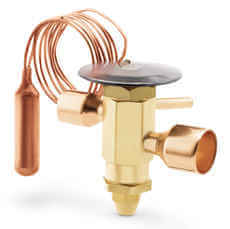 Metering Device
Metering DeviceMetering Device: A device used to control the flow of refrigerant to the evaporator.
This liquid line goes to a metering device that controls the flow of refrigerant to the evaporator. This is considered the dividing point between the high pressure and low pressure sides of the system. As this high pressure, high temperature, subcooled liquid reaches the metering device, it is metered in and converted from a high pressure, high temperature refrigerant to a low pressure, low temperature refrigerant.
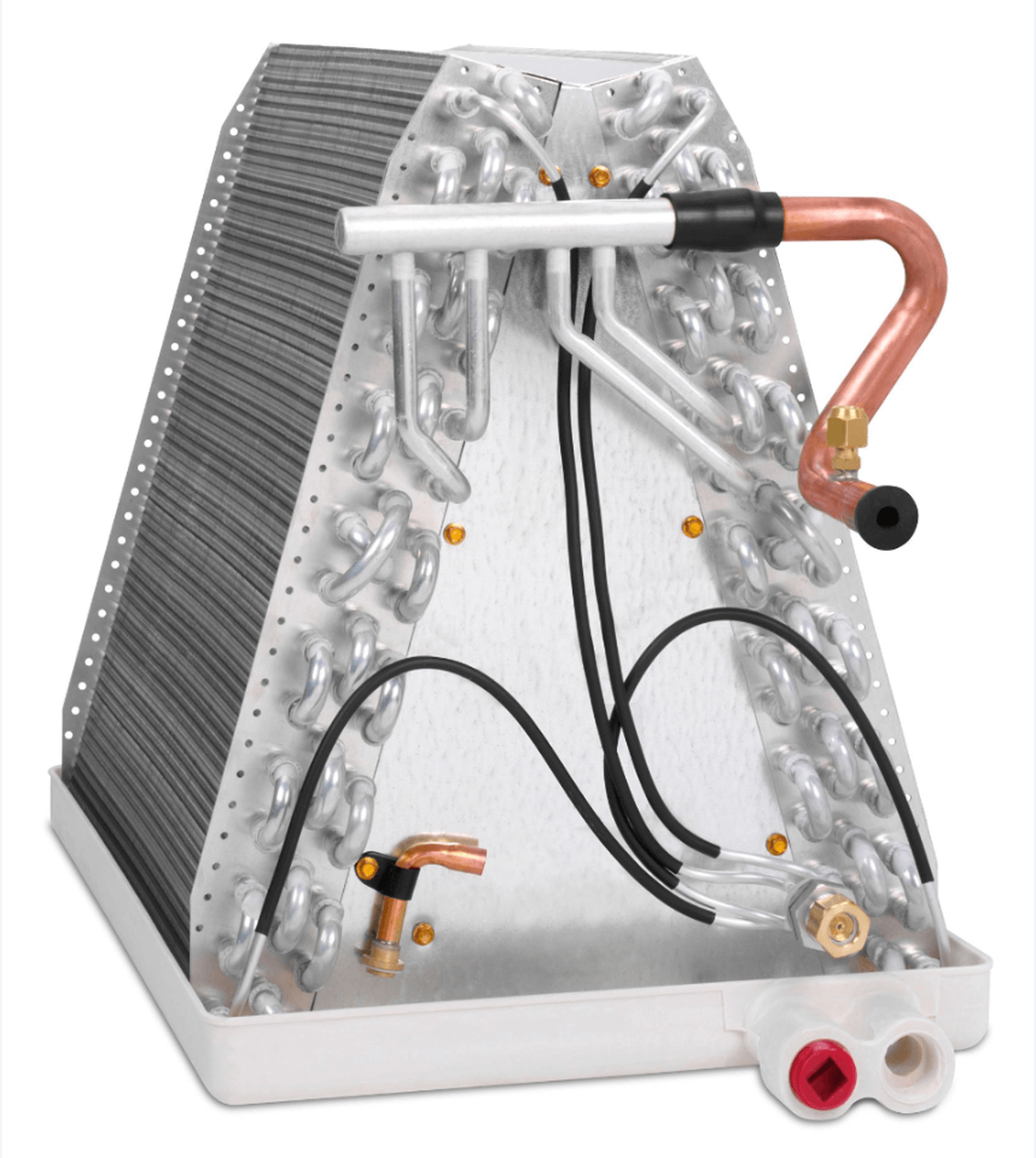 Evaporator Coil
Evaporator CoilEvaporator: A device used to absorb heat into the refrigeration system.
After the refrigerant leaves the metering device it enters the evaporator coil (sometimes referred to as the Air Handler). This coil (just like the condenser coil) has a fan that pulls or pushes air through it.
As this low temperature refrigerant enters the coil, warmer air from the conditioned space is pulled through it. Heat is being removed from this air as it passes through the coils and this heat is being absorbed by the refrigerant. This is why we say that an evaporator absorbs heat.
The air leaving the evaporator coil is now cold and enters the conditioned space. The heated refrigerant returns to the compressor through the suction line and the process repeats.
Side Note: During the process of warm, humid air flowing over a cold coil, their will be moisture vapor suspended in the air that condenses on the cold coil. The resulting liquid water is called condensate, and it drips down the coil and into a water pan below the evaporator coil. This water then exits the pan through a condensate drain line that leads to the sewer or to the outside of the home.
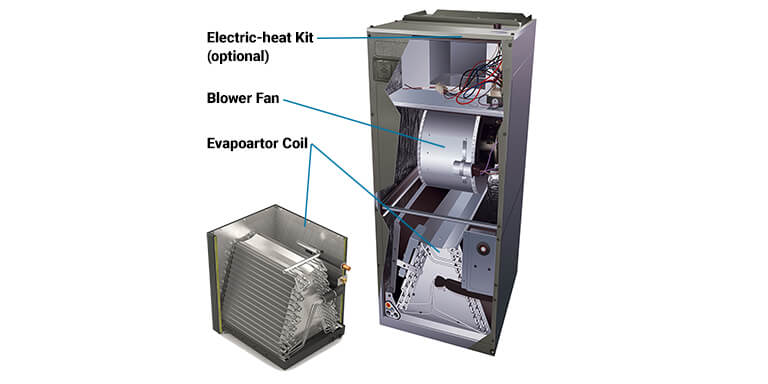 Coil and Air Handler
Coil and Air HandlerBy subscribing below, you will receive relevant information in the form of training videos, news, discounts, and current events involving the HVAC field.
Keeping you informed.
HVAC Schools › HVAC-Training-for-Beginners
“Learning is experience. Everything else is just information.”― Albert Einstein
Copyright © 2019 Bradley's hvac-schools.org
Subscribe
Recent Articles
-
HVAC Apprentice Jobs Maryland | Apprenticeship
Mar 02, 20 05:17 AM
If you have little to no experience, and are looking for entry level HVAC apprentice jobs Maryland, here are the best ones...